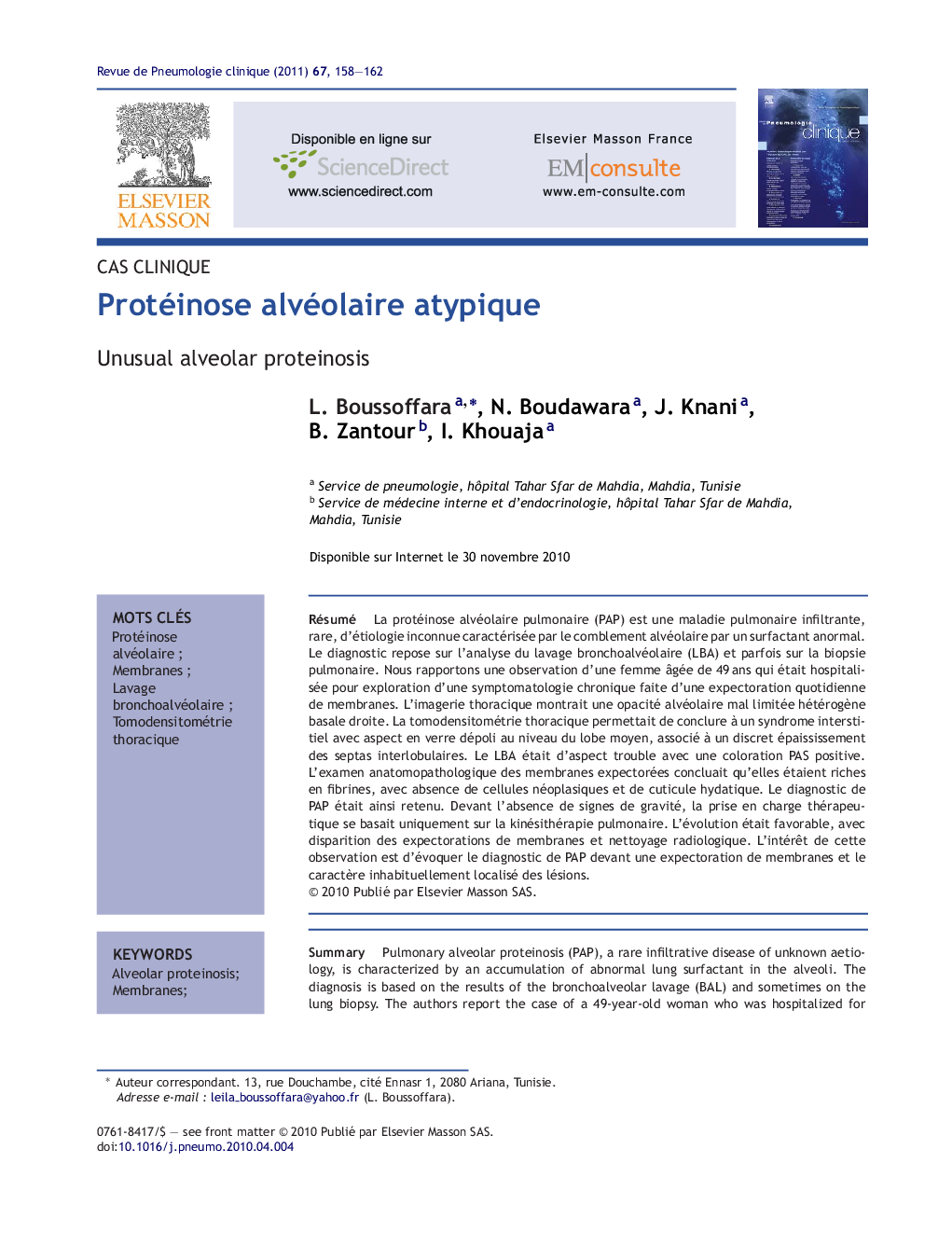| Article ID | Journal | Published Year | Pages | File Type |
|---|---|---|---|---|
| 3419595 | Revue de Pneumologie Clinique | 2011 | 5 Pages |
Abstract
Pulmonary alveolar proteinosis (PAP), a rare infiltrative disease of unknown aetiology, is characterized by an accumulation of abnormal lung surfactant in the alveoli. The diagnosis is based on the results of the bronchoalveolar lavage (BAL) and sometimes on the lung biopsy. The authors report the case of a 49-year-old woman who was hospitalized for chronic expectoration of the membranes. The chest X-ray revealed alveolar opacities in the lowest part of the right lung. The chest CT scan detected alveolar ground glass opacities with interlobular thickening involving the middle lobe. The BAL was opaque with periodic acid-Schiff stain-positive acellular material. The anatomopathology analysis of the membranes concludes as to the presence of granular eosinophilic material and the absence of neoplasic cells or hydatidous membranes. The diagnosis of PAP was established. Since functional deterioration was not detected, therapy was based on physiotherapy alone. The evolution was favourable, with the disappearance of the symptomatology and the normalisation of the chest X-ray. This observation shows an unusual presentation of PAP based on membrane expectoration and unusual localized lesions.
Keywords
Related Topics
Health Sciences
Medicine and Dentistry
Infectious Diseases
Authors
L. Boussoffara, N. Boudawara, J. Knani, B. Zantour, I. Khouaja,
